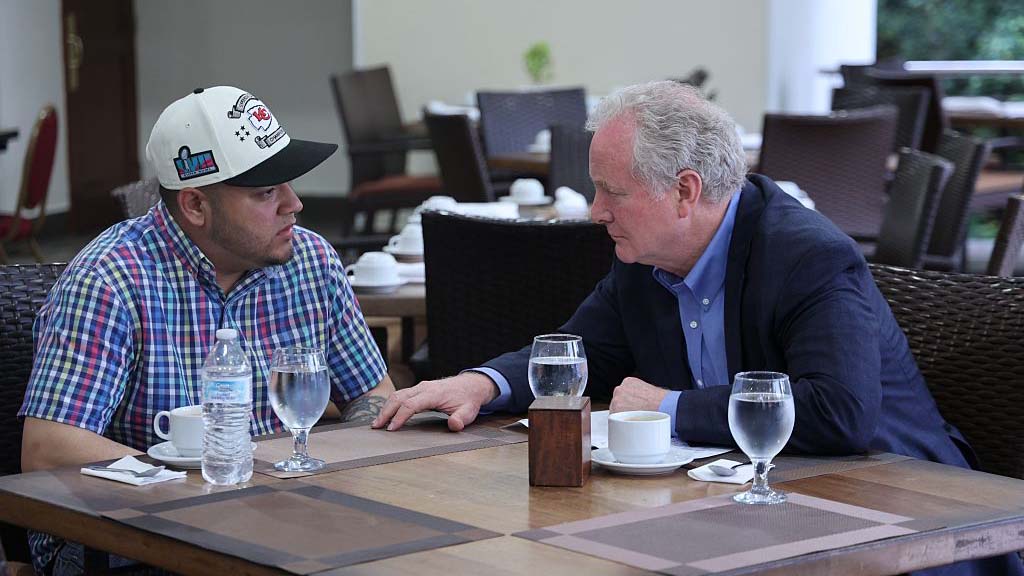NAB: 6 GHz Facts Being Ignored by OTI, Others
NAB’s McFadden says arguments against NAB’s push to protect broadcaster’s 6 GHz spectrum are misleading and uninformed

WASHINGTON—The NAB’s 6 GHz proposal to the FCC, in which 1,120 of the 1,200 MHz of the band be opened for unlicensed, low-power indoor (LPI) wireless devices—keeping 80 MHz for broadcasters to operate in hopefully without interference—did not sit well with the Open Technology Institute. OTI sent a letter to the FCC opposing the proposal, but according to a new blog post from NAB Vice President of Strategic Planning Patrick McFadden, that letter is a perfect example of “how little [OTI] understands what is actually at stake in the 6 GHz band.”
The 6 GHz band is primarily made up of broadcast ENG crews, and the NAB believes that granting permission to these unlicensed LPI devices to utilize the spectrum causes potential interference issues, a major disturbance particularly as broadcasters' ability to provide information to viewers has been heightened during the current coronavirus pandemic.
“We take no particular issue with amateur pundits weighing in on policy at least plausibly aligned with their organizations’ mission,” McFadden wrote. “The problem is that there’s a considerable difference between acting like you know what you’re talking about and actually knowing what you’re talking about.”
McFadden says that OTI’s letter mischaracterizes the NAB proposal as a “last-minute proposal,” but rather the organization has “long sought to keep spectrum used for mobile operation, whether by broadcasters or public safety users, free from unlicensed use.” The sole point of change, McFadden argues, is that the NAB is willing to compromise on this as long as “safe zone” is created within 80 MHz of the band (broadcasters currently use 350 MHz of the 6 GHz band).
NAB also says the OTI argument that there is no or minimal danger of interference with wireless devices using 6 GHz spectrum is incorrect, and shared the technical analysis on which they are basing the idea that interference is possible and potentially dangerous.
McFadden continues his point/counterpoint argument as follows:
- On OTI’s claim that venues can decide whether Wi-Fi operations and newsgathering are compatible, McFadden says that venues often do not have the expertise and that the role of the FCC is to provide such guidelines to prevent harmful interference;
- OTI also says the 80 MHz is excessive since 8K video can be broadcast using 10 MHz, despite that the FCC recently granted the NAB experimental authorization to transmit 8K video in a bandwidth of more than 100 MHz;
- The OTI suggestion that broadcasters can use licensed spectrum in other bands is disproven because Wi-Fi has already been shown to cause harmful interference in other bands, like 2.4 GHz and 5 GHz;
- OTI says that broadcasters rely on bonded cellular technology for newsgathering operations. McFadden points out, however, that technology can often fail in emergency/critical situations.
Earlier this year, conservative groups also sent a letter to the FCC that any interference by wireless LPIs using the 6 GHz band was minimal.
Get the TV Tech Newsletter
The professional video industry's #1 source for news, trends and product and tech information. Sign up below.
“The FCC should ignore views like OTI’s and the gaggle of one-person special interest groups that filed demonstrably uninformed Facebook letters,” McFadden wrote. “NAB’s proposal to keep 80 MHz of the 6 GHz band off the table, temporarily, is a safety valve. … Until there is some actual experience with RLAN deployments at 6 GHz, it simply makes sense to proceed cautiously, before we step on a rake that will leave a permanent mark.”
McFadden’s entire blog post is available on the NAB Policy Blog.
